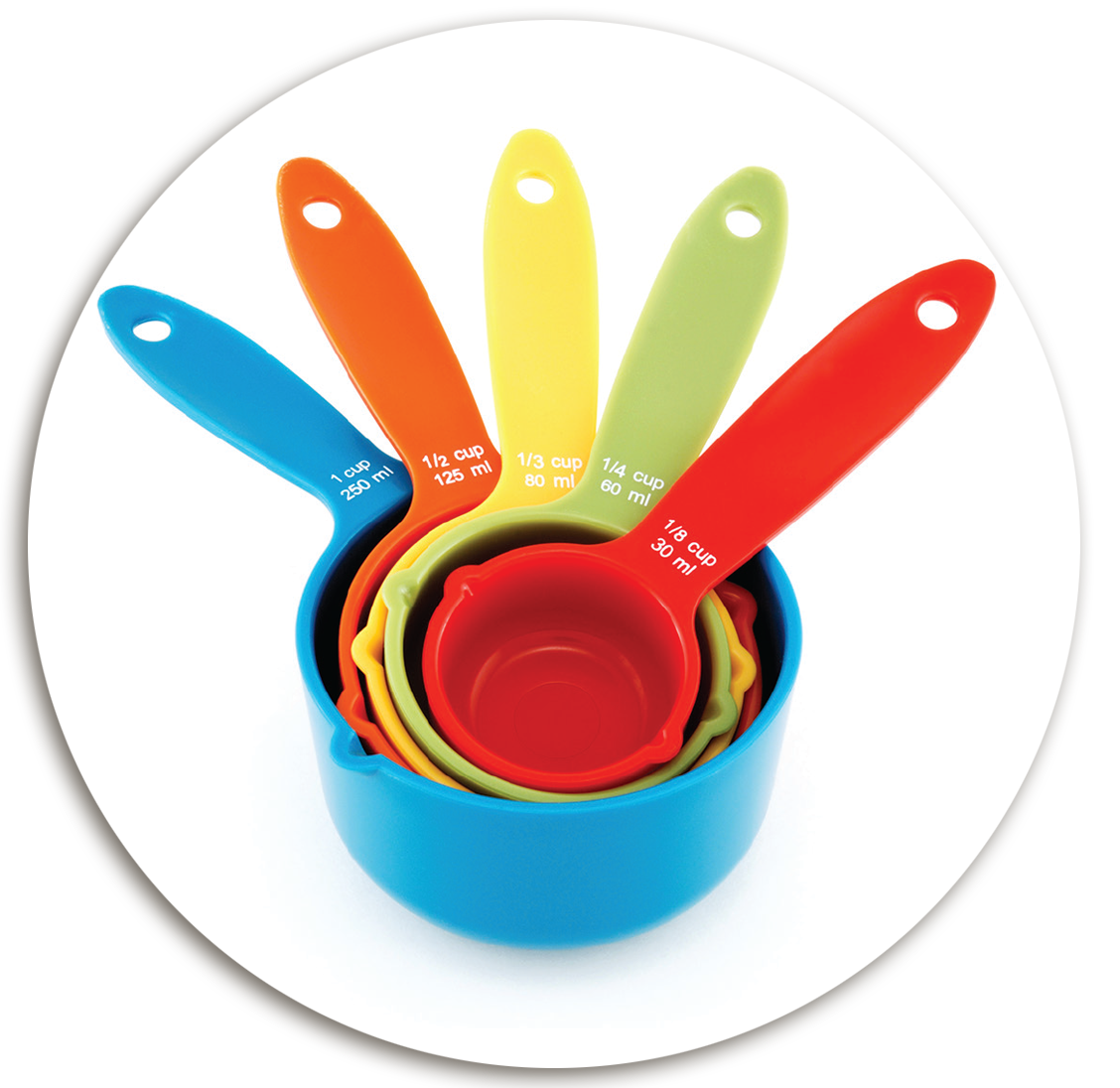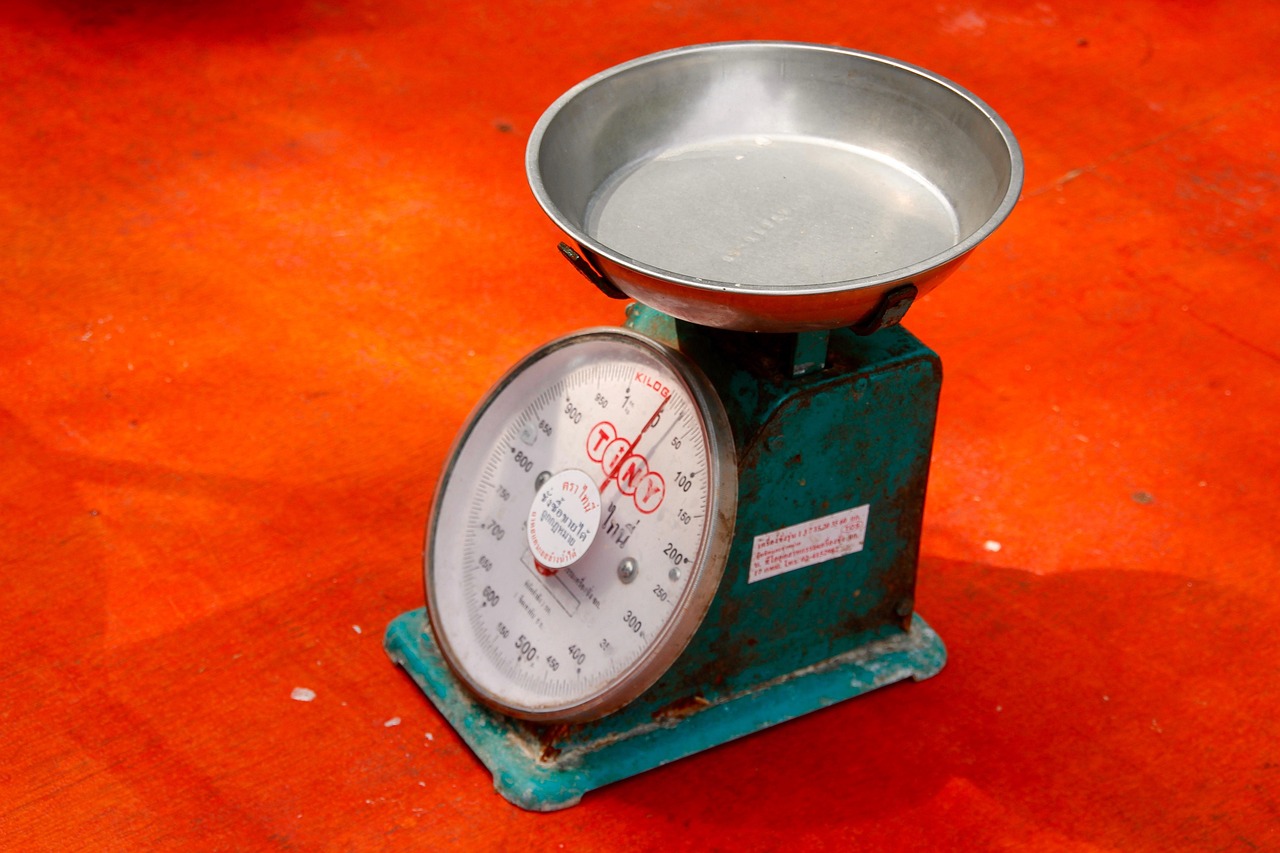Being able to make accurate and precise measurements is a skill needed in daily life, as well as in the science lab. For example, bakers and chefs must know the most accurate way to measure each ingredient to make the best tasting product. Depending on the state of matter (solid or liquid) a different measurement tool may be needed. Using the tool properly also affects the accuracy and precision of the measurements made. In this chapter, students will explore the proper use of measurement tools and investigate measurements used on Nutrition Facts Labels.

It is important to use the correct measurement tools when preparing food. Dry measurement cups measure volume and should be used to measure dry ingredients only. You should use these tools when a recipe calls for amounts of dry ingredients in cups, etc. If a recipe calls for dry ingredients by weight (e.g. ounces), you should use a scale to measure the ingredients. You should also make sure to follow instructions carefully because some items need to be sifted, spooned, packed, or dipped. Liquid measurement tools measure volume and should only be used when a recipe calls for liquids to be measured in cups, etc.

- Spoon: Stir flour in a small bowl or bag with a spoon. Spoon flour gently into a dry measuring cup. Level with the flat edge of a plastic knife over wax paper.
- Dipped: Dip the dry measuring cup directly into the container of flour, filling it to overflowing with flour. Level with the flat edge of a plastic knife over wax paper.
- Sift: Pour the flour into a strainer. Sift onto wax paper by shaking the flour through the strainer. Spoon flour gently into a dry measuring cup. Level with the flat edge of a plastic knife over wax paper.

Tip: View the “how to” video lab demonstration (Weights & Measures Lab I Demonstration Video) to see a visual demonstration of the described flour measurement methods.
Proper Measurement Methods for Liquids
Set the measuring cup on a level surface before pouring the liquid into the container. Allow any foam or bubbles that form after pouring to settle. Read the liquid measurement at the lowest point of the meniscus (curved upper surface of the liquid).
Conversions
- Milligrams (mg) to grams (g): 1g=1,000 mg (Example: 1,600 mg = 1.6 grams; move the decimal place three places to the left).
- Grams (g) to Kilograms (kg): 1kg=1,000 g (Example: 50 g = 0.05 kg; move the decimal place three places to the left)
Precision and Accuracy of Measurements
The accuracy of a measurement is how much that measurement differs from a known, true value. For example, if a “10g” brass mass from a standard set of masses is measured on a reliable scale and is found to be 10g, than the mass is accurate, but, if it is found to be 9.8g, it is not. Percent error can be calculated to determine the accuracy of a measurement. Precision is how reliable the measuring device is and how reproducible its measurements are. A 100-milliliter beaker is not as precise as a 100 milliliter graduated cylinder. One hundred milliliters measured in a beaker will vary slightly every time the beaker is used. The graduated cylinder has more graduations and will be more precise.

The Food and Drug Administration (FDA) regulates Food labels, also called Nutrition Facts labels. They were created to ensure consumers of safe products. Over time, they have evolved to provide consumers with measurement information about food. This information helps consumers make educated decisions related to health and wellness. Each label provides nutrient information for a serving size of that product. Serving sizes are not necessarily based on portion size, but rather a standardized amount of the product that can easily be divided into the whole. Most serving sizes are consistent with similar foods and are measured using household measurements. A serving size of milk, for example, is always measured by cup. All Nutrition Facts labels include calories, daily value, fat, cholesterol, sodium, carbohydrates, fiber, protein, certain vitamins and minerals, and an ingredients list. Percent daily value (%DV) is based on the total amount a person on a 2,000-calorie per day diet should consume. In 2016, the Nutrition Facts label was updated; updates include larger and bolded font for servings per container, updates to serving sizes, larger font for calories, updated daily values, change in nutrients required, added sugars now included, and a new footnote. This value is determined by dividing the amount in a serving of the product by the total amount recommended and multiplying it by 100 to express it as a percentage. The ingredients list includes all ingredients in the product listed from those of the greatest weight to those of the least weight. We should use Nutrition Facts labels to ensure we are consuming an adequate diet.
FoodMASTER Middle Lessons
FoodMASTER (Food, Math and Science Teaching Enhancement Resource) is a compilation of programs aimed at using food as a tool to teach mathematics and science. For more information see the Background & Introduction to FoodMASTER for Middle School. This lesson is one in a series of lessons designed for middle school:




